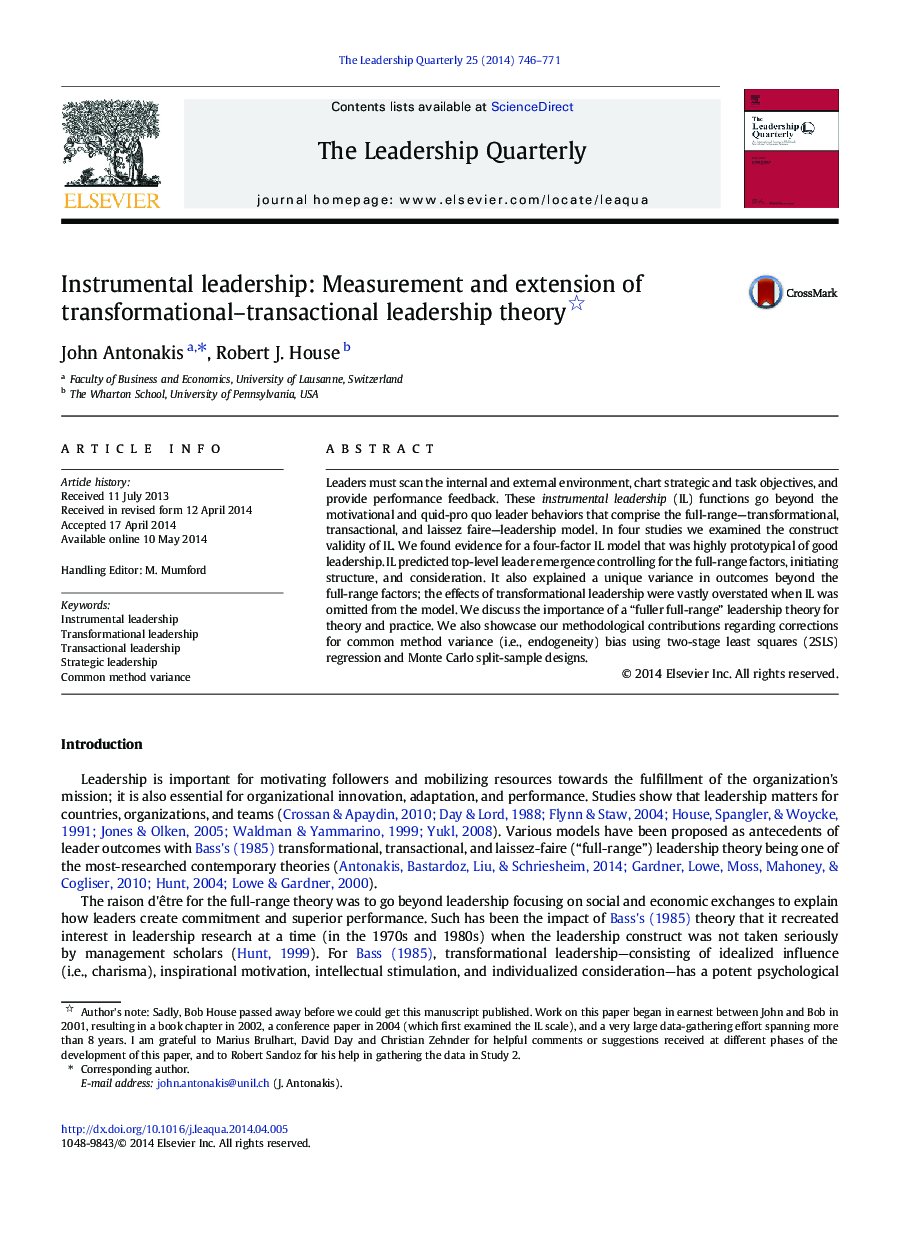| Article ID | Journal | Published Year | Pages | File Type |
|---|---|---|---|---|
| 887831 | The Leadership Quarterly | 2014 | 26 Pages |
Leaders must scan the internal and external environment, chart strategic and task objectives, and provide performance feedback. These instrumental leadership (IL) functions go beyond the motivational and quid-pro quo leader behaviors that comprise the full-range—transformational, transactional, and laissez faire—leadership model. In four studies we examined the construct validity of IL. We found evidence for a four-factor IL model that was highly prototypical of good leadership. IL predicted top-level leader emergence controlling for the full-range factors, initiating structure, and consideration. It also explained a unique variance in outcomes beyond the full-range factors; the effects of transformational leadership were vastly overstated when IL was omitted from the model. We discuss the importance of a “fuller full-range” leadership theory for theory and practice. We also showcase our methodological contributions regarding corrections for common method variance (i.e., endogeneity) bias using two-stage least squares (2SLS) regression and Monte Carlo split-sample designs.
